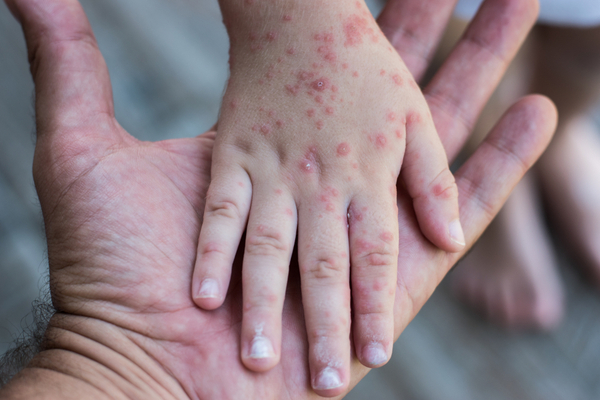U.S. health officials are warning clinicians to be alert for cases of measles following several outbreaks, largely among children who were eligible for the vaccine but did not receive it.
As USA Today reports, in an email sent last week, the Centers for Disease Control and Prevention (CDC) urged vigilance among health providers across the U.S. following reports of nearly two dozen cases of the preventable virus since December. Health providers should look for patients with rash and fever, symptoms of measles, and pay attention to patients who have recently traveled internationally, the alert said.
Officials have tracked seven cases of measles being brought into the country and two U.S. outbreaks with more than five cases each, the CDC said. Most cases were in young children and adolescents who had not received the measles, mumps and rubella (MMR) vaccine even though they were eligible. There have been similar upticks in measles rates around the world. CDC spokesperson Jasmine Reed confirmed this was the first nationwide alert to clinicians about the latest cases.
The U.S. is at a “Canary in a Coal Mine” Moment
The U.S. is at a “canary in the coal mine” moment with rising cases among children of the highly infectious, vaccine-preventable disease, said Michael Osterholm, director of the University of Minnesota’s Center for Infectious Disease Research and Policy. Federal data has shown a large drop in vaccinations and record levels of vaccine exemptions among kindergartners.
“We’re going to start seeing more and more of these outbreaks,” Osterholm told USA Today. “We’re going to see more kids seriously ill, hospitalized and even die. And what’s so tragic about this, these are all preventable.”
About a fifth of people who get measles will be hospitalized, according to the CDC. About one in 1,000 people who get the virus develop brain swelling that can lead to brain damage, while one to three in a thousand will die.
Parents are not Complying with Vaccine Recommendations
The U.S. is seeing a growing body of parents who don’t want to comply with vaccine recommendations, coupled with lagging access to health care to get vaccinated amid the pandemic, Osterholm said. The latest measles cases appear to show the risk of foregoing the safe and effective vaccine.
Since Dec. 1, the U.S. has seen outbreaks in Philadelphia, at a children’s hospital and later at a day care facility, and a family that had six cases in Washington state. Officials have also documented measles exposures at two international airports in the Washington, D.C. area, a separate case in the Atlanta area, of an unvaccinated person who had traveled out of the country. New Jersey recently reported a case, as well.
Between Dec. 1 and Jan. 23, there were 23 cases in the U.S., the CDC said. There were 56 cases in all of 2023 and 121 cases in 2022.
Global rise seen in U.S.
After years of declining vaccination rates, researchers from the CDC and the World Health Organization issued a report in November highlighting increases in global measles cases and deaths the previous year. There were 9 million cases and 136,000 deaths, mostly among children, in 2022, signaling rises compared to the previous year. Europe has seen an exponential increase in recent measles cases, the WHO said.
Vaccination rates have dropped in the U.S., according to a CDC report. It found the U.S. reached its highest level ever for vaccine exemptions in the 2022-23 school year, with about a quarter-million kindergartners at risk of measles.
The CDC said recent measles cases often originate from unvaccinated U.S. residents who travel internationally and transmit the disease to others who aren’t immune. “The increased number of measles importations seen in recent weeks is reflective of a rise in global measles cases and a growing global threat from the disease,” the CDC said Thursday.
Measles is Highly Contagious
Measles is highly contagious for people who are not vaccinated or immune. Older people tend to be either vaccinated or immune. The virus spreads via droplets usually after a person coughs or sneezes. It lingers long after a person has left a room. Health providers typically wait two hours before they enter where an infected patient has been.
Symptoms appear a week or two after exposure. They can include runny nose, cough and high fever, with a reddish or hyper-pigmented rash that develops first at the hairline before spreading to the neck and downward.
The MMR vaccine is typically administered in two doses beginning after a baby turns 1. The child receives a second dose when they are between 4 and 6. The full regimen provides near-complete immunity.
—
Photo Credit: pavodam / Shutterstock.com
